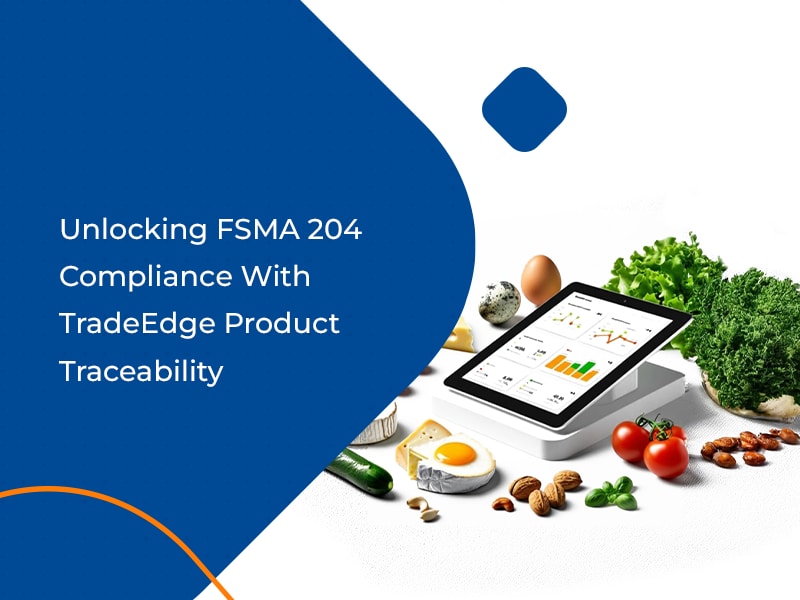Home > TradeEdge > Blogs > Data and analytics: Unlocking business opportunities for e-commerce businesses
Data and analytics: Unlocking business opportunities for e-commerce businesses

Data is paramount for every business, especially when making important decisions or formulating new strategies. In e-commerce, a colossal amount of data lies untapped across its operations, supply-distribution networks, and customer services. In their granular form, such data can create awareness regarding market trends, shifts in consumer buying behaviors and competitors, and disruptions occurring deep down in the demand-supply-value chain.
With the help of e-commerce data, such crucial information is collected from different touchpoints and processed to make data-driven decisions.
What is e-commerce data, and how does it help businesses?
As per statistics, nearly 49% of business leaders agree that analytics help with better decision-making, and 10% of the other respondents stated that such analytics improve relationships with end customers and other partners.
But, navigating through the massive datasets and numbers is overwhelming and manually extracting and analyzing such data often paint half-truths due to granular data omission or erring when extracting data from bulk documents.
However, with the help of the right tools and technology, such hurdles can be easily overcome.
E-commerce data is drawn from multiple sources such as:
Once the available data is harnessed, it can be put to practical usage in several areas, such as:
Sales trend and share analysis: It is crucial to understand the sales trend and market share analysis of one’s own business and competitors. With e-commerce data, information about the above categories is easily tracked versus competitors across key categories and brands.
Media performance analysis: Big e-commerce businesses spend millions of dollars in marketing procurement and execution to outreach a broad customer base, both hyper-local and those living beyond the national borders. Analyzing media performance is crucial for multiple reasons, especially during budget allocation. Consolidating media performance metrics, including ROAS, ACOS, CPM, CTR, and Impressions, and measuring them weekly, quarterly, monthly, or annually is one of the critical functions of optimizing media spending.
Organic search performance: Identifying leading organic search terms and focusing on SEO strategies to rank them helps e-commerce companies identify areas where their search strategy is winning or losing.
Profitability analysis: Making use of e-retailer PoS data (Profit Per Unit and Cost of Goods Sold) to determine optimum product margin vs. thresholds. The output paints a clear picture of whether the business is generating enough profit or is simply hitting a blank wall.
Inventory planning: To optimally utilize existing inventories, e-commerce data analytics software leveraging AI/ML capabilities determines how much stock is needed to meet the market demand. This enables e-commerce owners to have direct control over their inventories and plan their supply accordingly.
Lost buy box analysis: Data analytics in e-commerce determines the factors driving Lost Buy Box by using data from the PDP (Product Detail Page).
Ratings and review analysis: Storefront insights extracted from user ratings and reviews help e-commerce owners identify underperforming SKUs compared to the competition. Businesses then work on the weak areas to address the common issues based on user complaints. They connect with them to listen to their inputs and address them to enhance customer satisfaction.
Share of search analysis: With the help of e-commerce data, analysis of paid/organic search performance can help businesses draw insights from their campaign execution and take measures for underperforming.
Product page content compliance: Product content and integrity analysis compare the content with internal company content to check for any compliance issues and address them immediately.
Mining for e-commerce gold with technology – The best way to win with e-commerce
E-commerce companies are gold mines of data. With the TradeEdge platform, businesses can gain valuable insights. Such e-commerce data analytics can paint a clear picture of where their business stands in the market vs. competition.
TradeEdge is a cloud-based solution that provides insights across the demand value chain, similar to the points above, for accelerating profitable growth and getting one step closer to an autonomous supply chain.
Hence, e-commerce businesses benefit immensely from gaining maximum channel visibility, adding new channel partners, improving retail execution, and faster reaching new markets.


Possibilities Unlimited
Possibilities Unlimited
Inspiring enterprises with the power of digital platforms
More blogs from EdgeVerve →